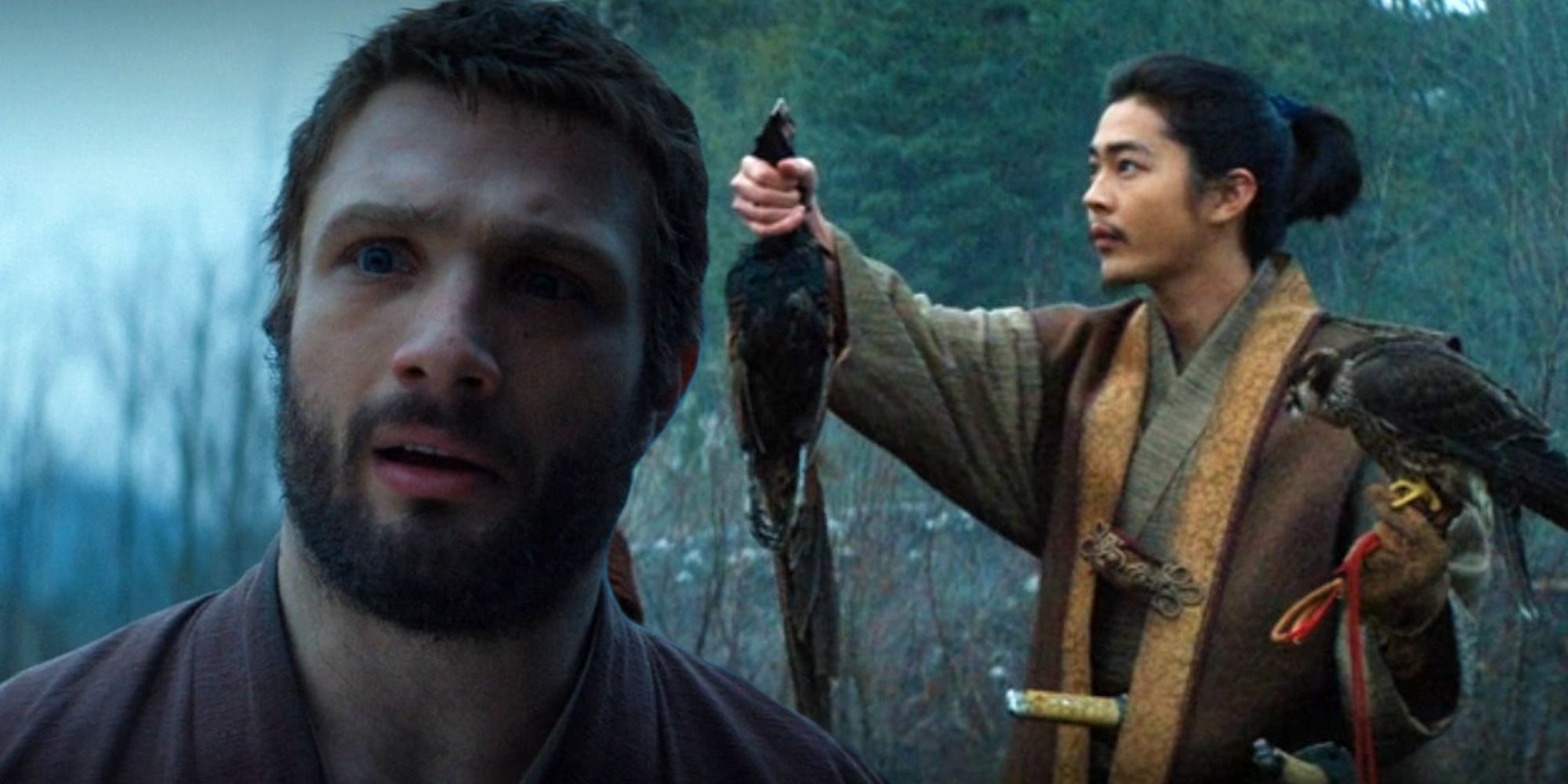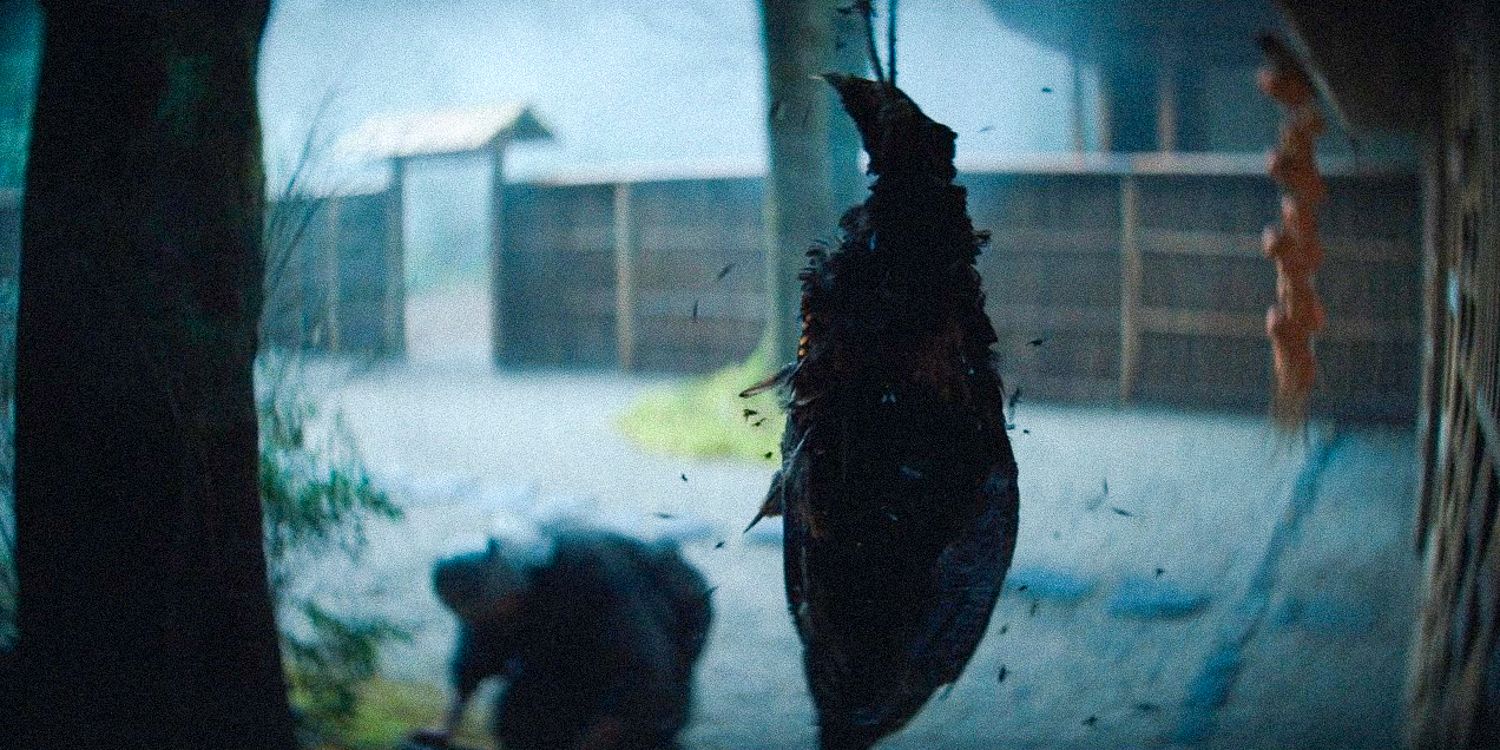
Shōgun episode 5 includes a story in which John Blackthorne hangs a pheasant to rot, continuing a food trend of the show and proving to be vital to his character. John Blackthorne, played by Cosmo Jarvis in Shōgun‘s cast of characters, begins the latest installment of the show by dealing with the aftermath of Nagakado’s killing of Jozen. Thanks to Nagakado’s actions, it seems as though war is brewing between Toranaga, his allies, and the forces of Ishido’s council by the time of Shōgun episode 5’s ending.
Concerning where Blackthorne fits into things, his training of Toranaga’s men in the tactics of naval warfare may give the latter an edge against Ishido’s warriors. Rather than continuing his training of the Samurai, a subplot of Shōgun episode 5 focused intently on Blackthorne’s home in Japan, his relationship with Mariko, and the returning Buntaro, who was thought dead after episode 3. From reveals about Lady Mariko’s family in Shōgun to a tragedy surrounding Blackthorne’s gardener, these story threads coalesced thanks to the strangest of plot devices: a rotting pheasant.
John Blackthorne’s Decision To Let The Pheasant Rot Explained
A pheasant became the unlikely catalyst of Shōgun episode 5’s story.
At the beginning of Shōgun episode 5’s story, Toranaga presents Blackthorne with a pheasant as a gift for training his warriors in British naval warfare. Upon receiving the pheasant, Blackthorne confuses those in his home by hanging the pheasant outside his house. He tells those in his service to leave it hanging, even days later, as the bird begins to rot and decay. Despite the continued bad smell, drawing of flies, and overall rotting of the pheasant’s carcass, John leaves it hanging for reasons that confuse both the Japanese inhabitants of his home and Shōgun’s audience.
Interestingly, the decision to let the pheasant hang for days is one versed in historical accuracy. In the 17th century, and even to this day in some cases, game such as pheasants and other birds were often hung after being obtained. The reason for this stemmed from personal taste, with the process of hanging creatures like pheasants making the meat more ripe, thus tasting better upon being cooked. Some even preferred to allow pheasants to rot, explaining why Blackthorne did the same in Shōgun episode 5.
| Shōgun Season 1 Episodes Remaining | Release Date |
|---|---|
| “Chapter Six: Ladies of the Willow World” | March 26, 2024 |
| “Chapter Seven: A Stick of Time” | April 2, 2024 |
| “Chapter Eight: The Abyss of Life” | April 9, 2024 |
| “Chapter Nine: Crimson Sky” | April 16, 2024 |
| “Chapter Ten: A Dream of a Dream” | April 23, 2024
|
Shōgun’s Pheasant Ends Up Being More Important Than Food
The rotting pheasant becomes part of a greater plot point in Shōgun episode 5.
When first hanging the pheasant, Blackthorne insists that no one should touch the bird who works within the confines of his house. He states that the bird is forbidden, and utters three words in broken Japanese to get his point across: “If touched – die!” In Blackthorne’s mind, this is simply an exaggeration common in the English language, uttered so that the Japanese patrons of his home know not to touch the pheasant. Blackthorne only wishes for the bird to mature to his tastes, as he wishes to prepare it well given it was a gift from Lord Toranaga.
While Blackthorne did not strictly mean that someone should die if they touch the pheasant, this is what eventually transpires in Shōgun episode 5’s ending.
However, a central theme of Shōgun episode 5 and the show as a whole revolves around Blackthorne underestimating the dedication to honor present in 17th-century Japan. While Blackthorne did not strictly mean that someone should die if they touch the pheasant, this is what eventually transpires in Shōgun episode 5’s ending. Under the orders of Muraji, the village headman and Toranaga’s spy, Uejiro removed Blackthorne’s pheasant. Uejiro was Blackthorne’s gardener, with Fuji – Blackthorne’s consort – later enforcing the apparent orders of her master by sentencing Uejiro to death for touching the bird.
The fate of Uejiro, strongly implied to have been orchestrated by Muraji who later frames the late Uejiro as Toranaga’s spy, horrifies Blackthorne. The Englishman underestimated how dedicated the Japanese are to order and honor, believing himself to have killed Uejiro indirectly by giving what Fuji mistook for an order of death should the pheasant be removed. While the pheasant and Blackthorne’s treatment of it seemed strange and somewhat humorous at first, the fate of Uejiro soon turned the ordeal – like the pheasant itself – rotten and sour.
The Pheasant Is Another Example Of Shogun Using Food To Show Cultural Differences
Blackthorne’s pheasant highlights the differences between England and Japan in the 17th century.
The final way in which Shōgun episode 5’s pheasant is important is that it continues the show’s trend of highlighting cultural differences through food. This was first showcased in Shōgun episode 4 through nattō, the meal that Mariko and Fuji were shown to eat. When Blackthorne tried the nattō, the two women thought it was funny, as an Englishman might not care for the somewhat acquired taste. This trend of using food to highlight cultural differences continued with the pheasant in Shōgun episode 5, as well as the rabbit stew that Mariko, Fuji, and Buntaro refused to eat.
New episodes of Shōgun release every Tuesday on FX and Hulu.












